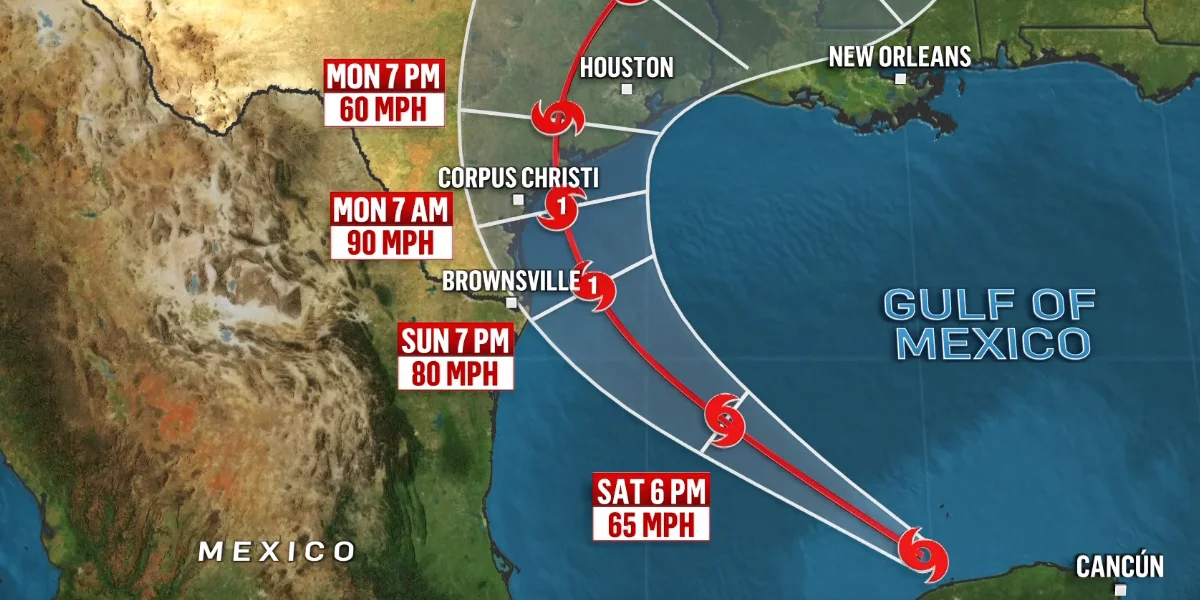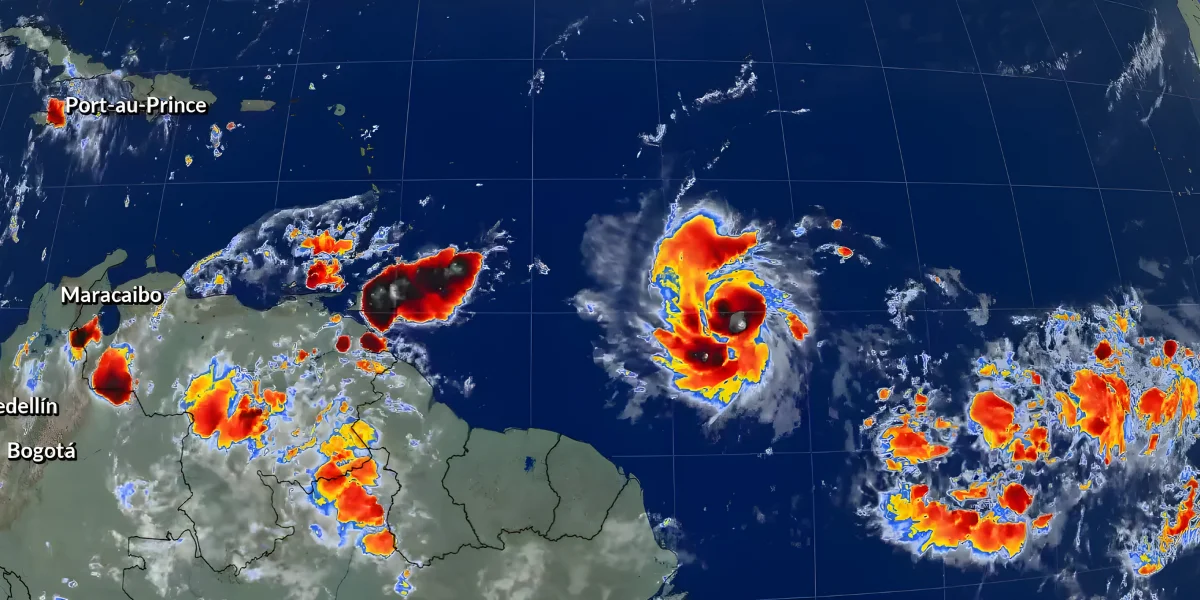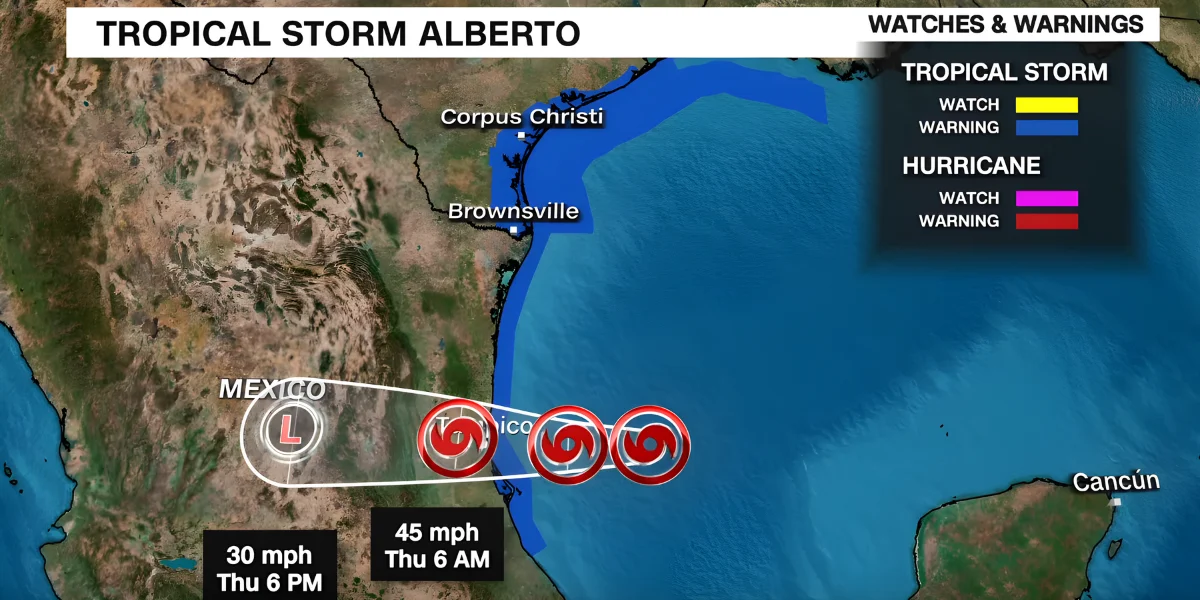The hurricane risk for Texas is increasing as Beryl moves away from the Yucatán Peninsula

Hurricane Beryl has struck Mexico's Yucatán Peninsula after causing widespread devastation across the Caribbean, resulting in at least 10 deaths.
It made landfall early on Friday as a category-two storm, according to the National storm Center, with gusts as high as 175 km/h (108 mph).
Since Hurricane Delta in October 2020, it was the strongest hurricane to hit the peninsula. Currently, Beryl is a tropical storm.
Beryl dumped a lot of rain on Tulum and Cancún, two popular tourist destinations. Although there was no significant damage recorded, the strong winds toppled trees and interrupted power.
Schools were shuttered, hotel windows were boarded up, and emergency shelters were set up in regions that would be most affected before to Beryl's arrival.
In order to provide help, almost 8,000 soldiers from the national guard, army, and air force were sent to the Yucatán Peninsula.
Local authorities said that around 3,000 tourists left Holbox Island off the coast, and hundreds of people were evacuated from hotels. Over 300 flights experienced delays or cancellations.
The Cayman Islands suffered severe damage to a large number of homes and businesses on Thursday, especially near the coastline, where entire neighborhoods were submerged under water.
Beryl is currently crossing the Gulf of Mexico and heading northwest, guided by a heat dome over the Southeast United States.
Sometime early on Monday, Beryl will take advantage of decreased pressure over the Central United States to make a northwest curve in the western Gulf of Mexico toward the Gulf Coast of Texas. Beryl may be able to decrease its forward speed before or after landfall.
Residents living close to the Texas Gulf Coast are advised to "have an emergency plan to take care of yourself and your loved ones," according to Governor Greg Abbott.
The North Atlantic may see up to seven major hurricanes this year, according to the US National Oceanic and Atmospheric Administration, an increase from the typical three every season.


